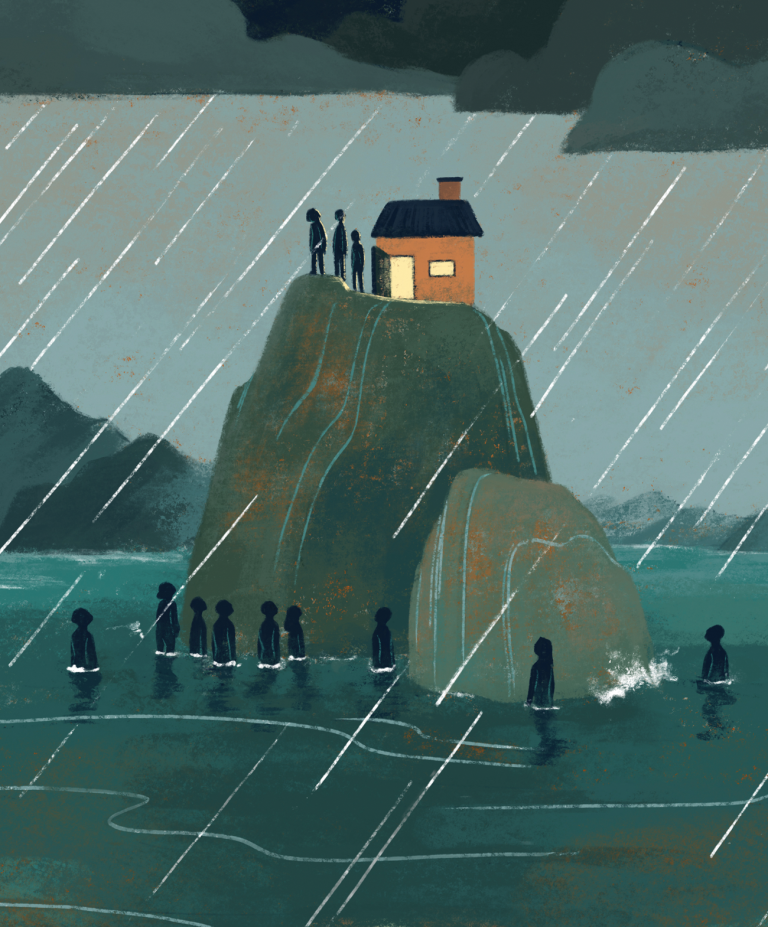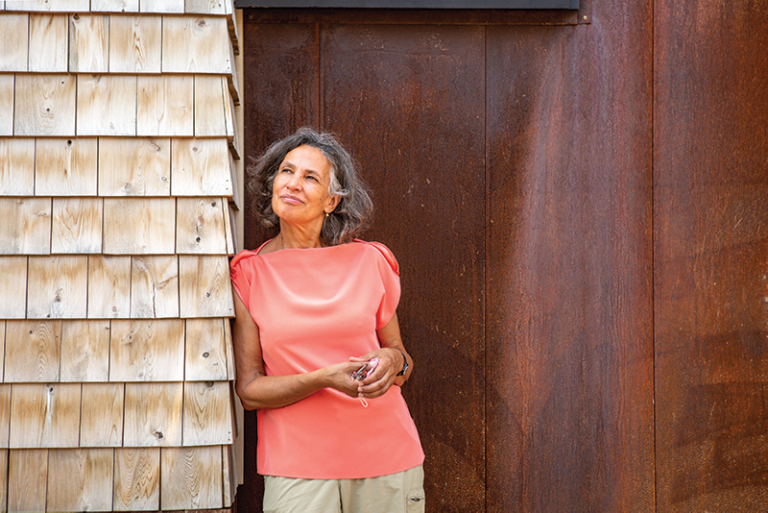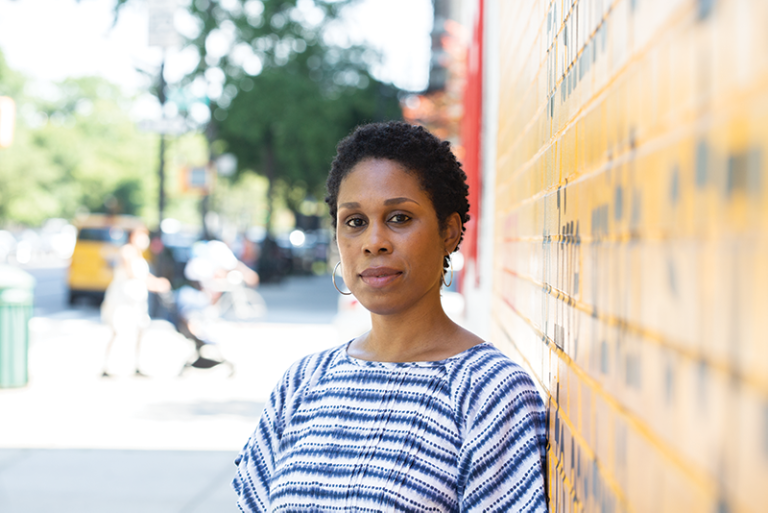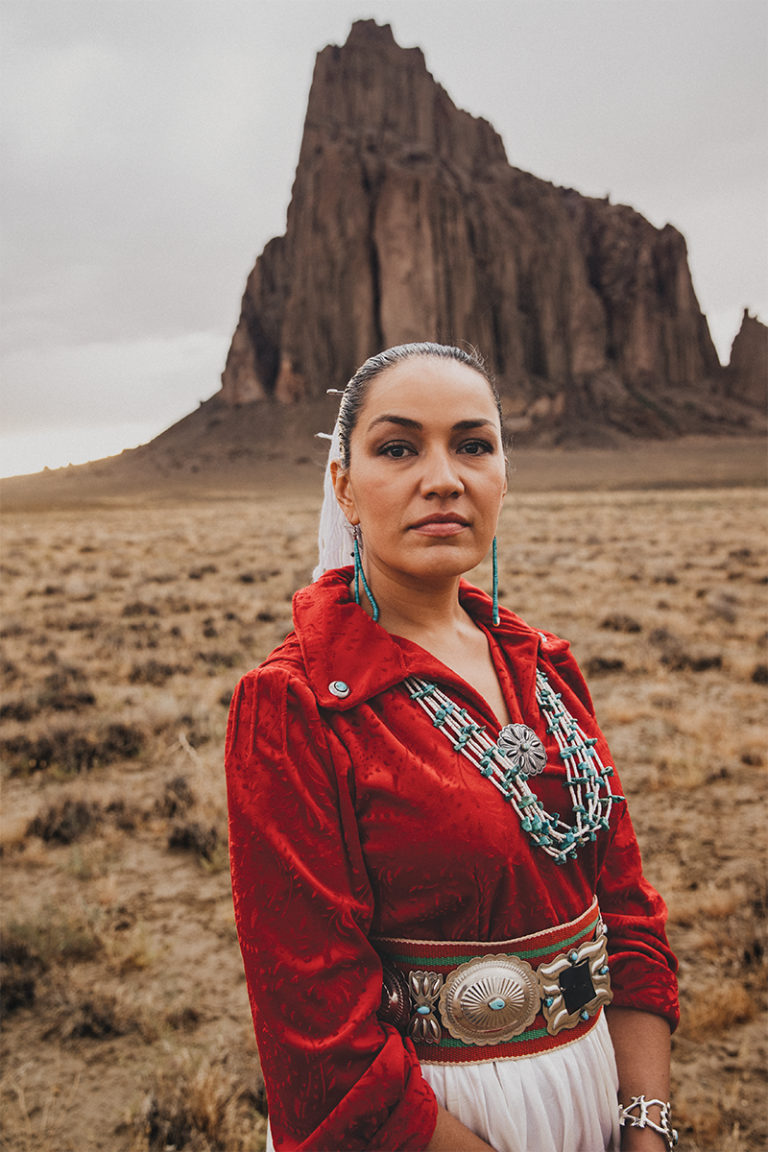Who'll Stop the Rain?
The outsized toll COVID-19 has taken on people of color reflects the insidious effects of structural inequity
- Feature

The statistics are alarming. Between March and June of 2020, Latinx and non-Hispanic Black people were hospitalized for COVID-19 at a rate of up to four and a half times that of non-Hispanic white people. Indigenous people were hospitalized at five and a half times that of white people. And as of late July, the Navajo Nation, which has a population of only about 175,000, had seen more coronavirus cases per capita than any U.S. state, while Black people, who make up only 13 percent of the U.S. population, accounted for one-quarter of COVID-19 deaths—2.3 percent more than white people, who represent around 60 percent of the population.
These numbers may be shocking, but to those who study health disparities, they’re hardly surprising. “It was totally predictable that marginalized groups would experience higher infection rates,” says Eugene Richardson, an assistant professor of global health and social medicine in the Blavatnik Institute at HMS. “It’s almost a given.”
Early headlines noted more risk factors among populations of color, but the real reasons for these differences go far deeper than many news organizations initially reported.
“To say Black people are having worse outcomes because they have more diabetes and obesity and things like that suggests their personal choices are at fault,” Richardson says. Blaming the victims, experts maintain, ignores the social realities created by 400 years of U.S. history and exacerbated by the biggest wealth gap ever recorded.
A report published in June by Inequality.org, a project of the Institute for Policy Studies, stated that the combined wealth of this country’s 640 billionaires—$3.581 trillion—was more “than the entire Latino population combined.” The report, “White Supremacy Is the Pre-Existing Condition,” further noted that “total U.S. billionaire wealth is equal to 76 percent of all Black wealth combined.”
“Housing is health care. Being able to socially distance is really a privilege.”
This wealth gap existed before the pandemic but has worsened during it. Between March and June, the report notes, wealth held at the top increased by more than $637 billion, “the equivalent of more than 13 percent of all Black wealth.” As that was happening, 45 million nonbillionaires filed for unemployment, with many losing their health insurance along with their jobs.
Not that having insurance guarantees good health. “Leading a healthy life is not just determined by our access to personal health care services,” says Mary Bassett, the François-Xavier Bagnoud Professor of the Practice of Health and Human Rights at the Harvard T.H. Chan School of Public Health and a former commissioner of the New York City Department of Health and Mental Hygiene. “What some people refer to as the social determinants of health—housing, education access and attainment, low income despite working two or three jobs, environmental conditions, stress—these affect health in ways that are both direct and indirect.”
Shelter from the storm
Many health advocates say deficiencies in these social indicators are the result of a system rigged against communities of color. A 2019 white paper by the Urban Institute, an economic and social policy think tank, reports that the racial gap in home ownership is worse today than it was in 1968, when the Fair Housing Act made redlining, or designating Black neighborhoods as poor investments for lenders, illegal. Though redlining has been outlawed, its legacy remains in the form of persistently lower housing values in neighborhoods formerly redlined. Other issues continue to contribute to the problem, including unequal access to credit, particularly in the form of mortgages, and credit-scoring systems many researchers consider biased; higher interest rates for Black and Latinx people; and predatory lending practices that, during the 2008 housing crisis, led to more foreclosures, losses from which many Black and Latinx families have not recovered.

Home ownership matters because “it’s the principal source of intergenerational wealth transfer,” says Bassett. “Central to how many people get rich is inheriting from their parents.”
When owning is out of the question, renting is the only answer, but affordable units are often substandard and, Bassett maintains, “dilapidated housing may expose you to pest infestation, lead in paint or water, and overcrowding,” all of which can lead to health problems such as asthma, lead poisoning, heart disease, and neurological disorders, according to a 2016 Brookings report.
Gentrification and health care-related bankruptcies can also send people into unstable housing or homelessness, says Oni Blackstock, MD ’05, a primary care and HIV physician and former assistant commissioner of the New York City Health Department’s Bureau of HIV/AIDS Prevention and Control. This instability makes it harder to stay on prescribed medications, keep medical appointments, and maintain healthy levels of the stress hormone cortisol, which helps control inflammation, blood glucose levels, blood pressure, and sleep.
“Housing is health care,” Blackstock says. She points out that housing is still largely segregated, and communities of color live disproportionately in areas with higher levels of air pollution and other environmental issues that imperil overall health. Plus, people living in poverty tend to experience crowding at home. “Being able to socially distance is really a privilege,” she says.
Without a raft
Housing also adversely affects educational attainment, which remains significantly lower among people of color than among white people at all economic levels, according to data from the 2020 National Equity Atlas. Educational inequity combined with occupational discrimination, the decline in affirmative action programs, and budget-cutting around human services that might help level the playing field means workers of color often must take lower-paying, unskilled jobs that, according to Blackstock, allow for less social mobility. In this pandemic, such jobs have also increased workers’ chances of becoming infected, with Black and Latinx people much less likely to have jobs that can be done remotely.
For many, pandemic relief has been inadequate, increasing the dangers for even those workers deemed essential. “In states where unemployment payments are hard to get or are too low,” says Stephen Martin, MD ’02, an associate professor of family medicine and community health at UMass Medical School, “people—even those who need to quarantine—are incentivized to work so they can keep food on the table and a roof over their heads. That puts them and their families at greater risk of illness.”
Incarcerated populations are even less protected, confined to unsanitary, overcrowded cell blocks that often lack proper ventilation and, in many cases, have a record of health code violations. The pandemic has cast a harsh light on what these conditions can mean for people who must endure them. The Marshall Project, a nonpartisan news organization that focuses on the U.S. criminal justice system, has been collecting data on COVID-19 testing, infections, and reported deaths in prison populations and among the prison workforce. Between the first week of April and the first week of August, nearly 87,000 prisoners and just over 19,000 prison staffers tested positive for the disease and more than 800 incarcerated individuals and 62 prison workers died from it. As in the nonincarcerated population, these counts are likely lower than the number actually infected.
In June, a transfer of about 200 untested prisoners to San Quentin State Prison led to it becoming a hot spot in California, with more than 2,000 prisoners testing positive for COVID-19 and 25 deaths before the corrections department began working to control the situation.
The Sentencing Project, a social justice organization based in Washington, DC, estimated in 2018 that Black adults are almost six times as likely to be incarcerated as white adults and Hispanic people are more than three times as likely. Given these statistics, many of those affected by COVID-19 in prisons have been people of color. Because of the disease, says Bassett, “prison sentences have turned into death sentences. People may lose their freedom, but they shouldn’t lose their right to life.”
To top it all off, the U.S. public health system has been gutted. “Resources for public health have been going down for years,” says Margarita Alegria, an HMS professor in the departments of medicine and psychiatry and chief of the Disparities Research Unit at Massachusetts General Hospital. Per capita public health spending has fallen by 9.3 percent since 2008, according to a 2016 paper in the American Journal of Public Health. The threats have only increased; in 2017 the American Public Health Association called out the massive cuts the White House proposed to public health as well as the proposed changes to health insurance for low-income people in the United States.
Hostile conditions
“Even four years ago when I was on the population board of the National Academies of Medicine, which looks into public health issues, one thing we kept hearing was how resources for public health had gone down,” says Alegria. “Public health wasn’t seen as very important, so it kept getting cut, but you can see where that got us.” Although you might expect that to change during a pandemic, in its proposed 2021 budget, the White House is cutting funding for the U.S. Centers for Disease Control and Prevention as well to other public health agencies, including the Health Resources and Services Administration and the Environmental Protection Agency.
While some states, including Massachusetts, are working on public health measures such as contact tracing, a plan for nationwide tracking has not been developed and may not even be possible now, given the more than 5.5 million confirmed cases in this country.
And testing, as it’s currently conducted, often raises more questions than answers. Because of the fragmented and inconsistent way testing is being performed throughout the country, it’s debatable how accurate the data are, especially without breakdowns by zip code and educational attainment as well as by age, race, and sex.
“We hear about how many tests are done in each state,” says Martin. “But this number is virtually meaningless. You have the same total number if you test 20,000 rich white asymptomatic people or 20,000 low-income people who are sick and living in public housing or in prison. So it’s difficult to drill down on who is really being harmed.”
Still, says Alegria, “we don’t need to wait for more data to tell us there are racial disparities” for this pandemic and that many disparities are driven by poverty.

Yet, Bassett points out that with COVID-19, as with diseases across the board, “not all of the racial difference in risk is explained by poverty.” She notes that highly educated Black women have more adverse health outcomes in general than high-school educated white women, for example, and that babies born to college-educated Black women are more likely to have lower birth weights than those born to white women who dropped out of high school.
“Both of my daughters had low birth weights,” she says. “The stresses of living in a world where you are continually demeaned in small ways and large has an effect on the body. That is part of the experience.”
Blackstock says these injustices can actually affect someone’s DNA. “The chronic and acute stress of historical trauma gets passed down not just orally but physically, through epigenetic inheritance,” she says. “And that historical trauma bears at least some responsibility for underlying conditions like diabetes, high blood pressure, and heart disease.”
Harsh season
It’s not just Black and Latinx people who are being disproportionately affected by the pandemic or historically targeted by systemic racism. Indigenous communities have been devastated by the new coronavirus.
“Probably every single Navajo person, regardless of where they are in the world, has been impacted by it,” says Bijiibaa´ Garrison, MD ’12, a physician at the Alaska Native Medical Center in Anchorage, Alaska, who spent months volunteering in Navajo Nation. “The degree of loss is pretty profound.”
To date, Alaska Native tribes have been more or less spared the effects of the pandemic because of strict early quarantining and a robust tribal health care system, but it’s a different story in the Lower 48, particularly out west.
“American Indians on the East Coast are typically more dispersed and more urban,” says Thomas Sequist, MD ’99, an HMS professor of medicine and health care policy and chief patient experience and equity officer at Mass General Brigham. “But west of the Mississippi, a larger percentage of people live on reservations and are getting health care through the Indian Health Service.” IHS has always been significantly underfunded, spending about $4,000 per capita in 2017—about 40 percent of the U.S. national per capita expenditure.

In addition, it took five weeks and a lawsuit before funds from the Coronavirus Aid, Relief, and Economic Security Act were made available to Navajo Nation and ten other federally recognized tribes. The tribes moved to sue when the U.S. Treasury missed the deadline for distributing the $8 billion appropriation, forcing the tribes to use their limited resources to fight the spread of SARS-CoV-2 among their citizens.
But other, more fundamental, factors complicate the picture and require longer-term solutions. “It was just bad luck that the virus got a foothold in Navajo Nation,” says Sequist, a member of New Mexico’s Taos Pueblo tribe. “But once it did, it took off wildly and spread without control because of social constructs like housing and economic disparities.”
Conditions in Navajo Nation have long been compared to those of developing countries, with more than a quarter of households lacking electricity and a third without running water, which makes frequent handwashing to prevent infection impossible.
Broadband internet services and cell towers are also scarce, curtailing access to public health messaging and telehealth consultations that could not only assess physical illnesses but also help address mental health issues heightened by isolation and grief.
As it is with other rural populations, the medical framework among Indigenous people is “lean and marginal,” says Martin. Rural areas have fewer ventilators and fewer hospital beds, he notes, so patients often have to be transferred to nearby cities for treatment, which is difficult when those areas are experiencing their own surge of cases. By early July of this year, the number of positive COVID-19 tests had spiked by 20 percent in New Mexico; neighboring Arizona saw hospitalizations increase by 35 percent in June. “We may have no choice but to start taking care of critically ill patients on the reservation,” says Garrison, who worked in Shiprock, New Mexico, a town with a single, 55-bed hospital.
As in all rural areas, there’s also a shortage of health care workers, from doctors and nurses to radiologists and phlebotomists, in and around Navajo Nation. The solution, Garrison and Sequist agree, is obvious. “It’s very clear that once Native people become physicians, they are more likely to work in the IHS,” says Sequist. “The push should be to get more Native people into medical school rather than to try to pay doctors to go to reservations.”
“It was just bad luck that the virus got a foothold in Navajo Nation. But once it did, it took off wildly and spread without control because of social constructs like housing and economic disparities.”
This would also make public health efforts more effective and increase trust in the health care system, adds Garrison. “It’s always better to get care from someone who looks like you and is from your local area,” she says.
Garrison has acted on this fact. After completing her volunteer work in New Mexico and returning to Alaska, she made a decision. “I am moving home,” she says, “to work full-time as a general surgeon in Shiprock at the Northern Navajo Medical Center, the IHS hospital where I volunteered. It’s so important to have medical providers from the community and the same culture.”
This type of intellectual investment helps increase economic self-sufficiency, which both physicians argue is the only way to truly move forward. “If 40 percent of a population is unemployed, you can’t have health in that setting,” says Sequist. “By definition there will be high levels of social risk factors like homelessness and food scarcity, and with that comes mental illness. Not long after that is the development of chronic illnesses—diabetes, cardiovascular disease, undiagnosed cancer—all of which contribute to poor health outcomes.
“We need to face the fact that this population has such large inequities because the federal government has created a system where economic prosperity cannot survive. It’s how the system’s been designed.”
Weather change
There are good reasons to fix the system. Aside from the moral argument that racism is wrong, says Richardson, “when you have a population that’s at high risk for disease, whether it’s HIV or COVID, a lot of the transmission through the general population is determined by the transmission rates in the highest-risk group.”
Simply put, “a highly contagious virus makes it clear that it’s pretty difficult to be safe in your bubble no matter how wealthy you are,” says Bassett. “Helping vulnerable groups is absolutely foundational. It’s the platform on which all levels of society rest.”
For a healthy society, experts agree, everyone needs better access to quality education and to economic security. People need living wages and health care that’s not linked to employment. They need better representation in the U.S. government and policy changes on a variety of issues. And finally, the wealth gap between white people and people of color in the United States needs to be closed. Many, including Richardson, say the only way to do that is through financial reparations, at least for Black people whose ancestors were brought to this country as slaves. “If reparations had been paid just five to ten years ago,” says Richardson, “COVID-19 death rates between white and Black people would likely be near parity.”
“A highly contagious virus makes it clear that it’s pretty difficult to be safe in your bubble no matter how wealthy you are. Helping vulnerable groups is absolutely foundational.”
If the political will for reparations and other policy changes is ever mustered, they might go a long way toward rebuilding the skepticism marginalized communities have held for centuries, says Blackstock. “People talk about mistrust of medicine because of the Tuskegee experiment, the government-run operation in which Black men with syphilis had their diagnosis, treatment, and information about the long-term sequelae of the disease withheld—all without their knowledge.”
“But a lot of people don’t even know about Tuskegee,” she points out. “It’s the current realities that make people mistrustful. And that’s pretty common among Black people across education and income levels.”
Although the current moment has created turmoil in so many ways, there are a few lights flickering in the darkness. COVID-19 treatments are improving, and a vaccine appears to be imminent. But perhaps more important, the country seems to be approaching a tipping point in the quest for social justice, a change that would signal better, more healthy lives for everyone.
“We needed more awareness and activism around what is happening in this country in a big way,” says Alegria. “That in itself has given me hope.”
Elizabeth Gehrman is a Boston-based writer.
Images: Angela Hsieh (top); John Soares (Bassett); Flynn Larsen (Blackstock); Shutterfreek (Garrison)